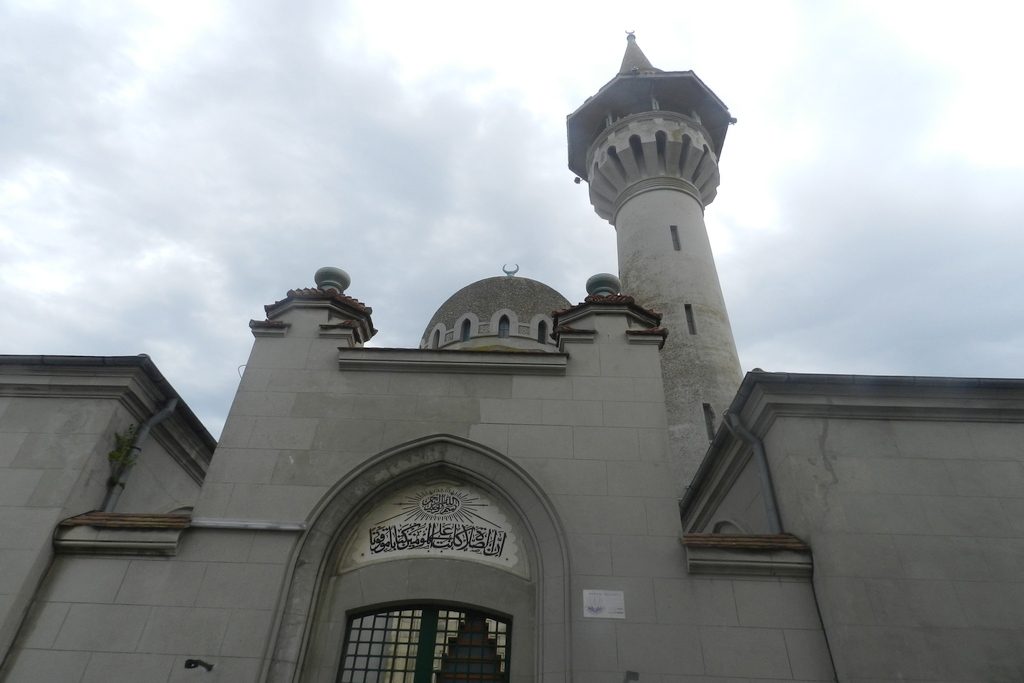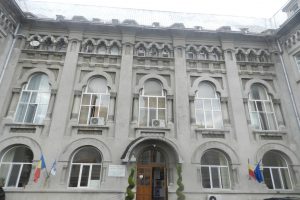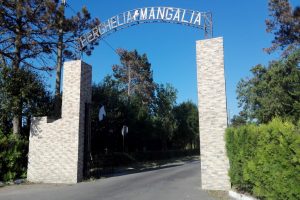

The large Mosque from Constanţa, also known as Carol Mosque is a Muslim place of worship from Constanţa, architectural monument, built between 1910 and 1913.
The construction began during 1910 on the initiative of King Carol I, in sign of homage to the Muslim community from Constanţa city. The works were completed during 1913. The inauguration took place on 31 May 1913, in the presence of the royal family and of the representatives of the Muslim cult from Romania.
The mosque was originally named Mosque Carol I, later being renamed Mosque Mahmud II. However, currently, the Muslim believers call it “Kral camisi” or “King’s Mosque”.
The construction was carried out according to the plans of the engineer Gogu Constantinescu, under the guidance of the architect Victor Ştefãnescu, taking as model Mosque Konya from Anatolia, Turkey. The building is of stone and brick, except for the dome and the minaret which are of reinforced concrete. The main portal is of Dobrudja stone and the black marble door with bronze inlays. The interior columns are of Câmpulung marble (Mateiaş).
The construction was carried out in the Egyptian-Byzantine style, with some Romanian architectural motifs. It is the first reinforced concrete building from Romania. The mosque is elevated on the place of the former mosque Mahmudia from 1822.
In the courtyard of the mosque to the right and left of the entrance is located an washer with six taps that serve for abdest (ablution) imposed by the Islam religion.
The minaret, built in Moorish style, has a height of 47 meters and the interior staircase has 140 steps up to the muezzin’s place, from where in the past was announced the praying time.
The central hall of the mosque is a square room, with the side of 14 meters. The praying room is simple, in Islam religion not existing any icons, the only ornaments being constituted of several murals on the great dome and the four arches. In the background, in the middle of the south wall (towards Mecca) there is the Mihrab from where the Imam officiates the service. The altar location on the south wall (towards Mecca) is determined by a verse from the Koran “Turn your face towards the Mesgid Haram (Kaba).” Around the Mihrab there are written the 99 attributes of Allah. To the right of the Mihrab there is the Minber, from where the Imam holds the hütbe (sermon) during the Friday weekly service and during the special services on celebrations. To the left of the Mihrab there is vaaz Kursu, the tribune where sermons are held outside the holidays.
The mosque has a beautiful indoor mural. Inside, it houses a famous oriental rug, received as donation from Turkey. It comes from the island of Ada Kaleh and has existed for 200 years. The rug impresses by its size (9 m x 16 m, in total 144 m²) and by its weight of over 490 kilos. This massive rug, handmade, in the famous handicraft center Hereke, from Turkey, was owned by the Sultan Abdul Hamid.



